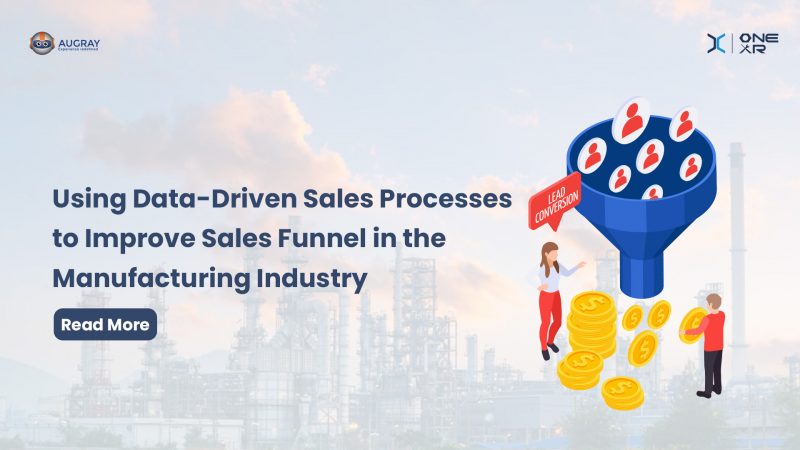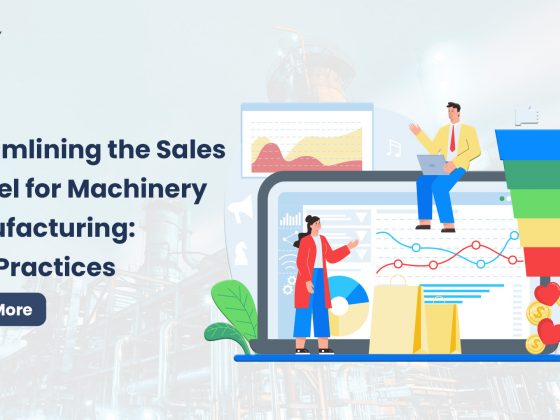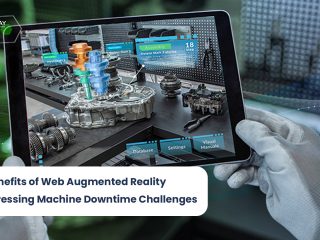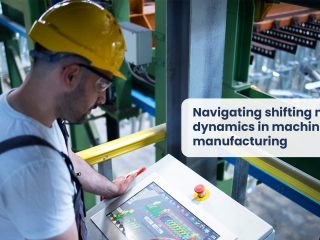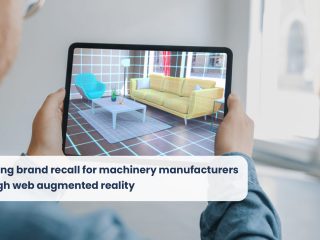In today’s data-driven world, manufacturers are increasingly turning to technology to help them optimize their sales processes and improve the efficiency of their sales funnels. Extended reality (XR) technology is one such tool that can be used to drive sales growth and improve the customer experience.
In this blog post, we will explore how data-driven sales processes can be used in conjunction with XR technology to improve the sales funnel in the manufacturing industry.
Advantages of Using Data-Driven Sales Processes
Data-driven sales processes offer several advantages to manufacturers, including:
- Better Insight into Customer Needs: By leveraging data analytics tools, manufacturers can gain a deeper understanding of their customers’ needs and preferences. This can help them tailor their sales strategies and offerings to better meet customer demands.
- Improved Efficiency: Data-driven sales processes can help manufacturers streamline their sales operations, reducing the time and resources required to close deals.
- Increased Sales Performance: By analyzing sales data, manufacturers can identify trends and patterns that can be used to optimize sales strategies and improve sales performance.
- Enhanced Customer Experience: By leveraging data and XR technology, manufacturers can create a more engaging and personalized customer experience, ultimately leading to increased customer loyalty and repeat business.
- Competitive Advantage: By using data-driven sales processes and XR technology, manufacturers can differentiate themselves from their competitors, ultimately leading to increased market share and revenue growth.
Using XR Technology to Improve the Sales Funnel
XR technology can be used to enhance the sales funnel in several ways, including:
- Immersive Product Demos: XR technology can be used to create immersive and interactive product demos that allow customers to experience products in a virtual environment. This can help customers better understand the features and benefits of products, ultimately leading to increased sales.
- Remote Collaboration: XR technology can be used to facilitate remote collaboration between sales reps and customers, allowing them to collaborate on product design and development in real-time. This can help to speed up the sales cycle and improve customer satisfaction.
- Virtual Trade Shows: XR technology can be used to create virtual trade shows and events that allow customers to engage with products and sales reps in a more immersive and interactive way. This can help to increase customer engagement and generate more leads.
- AR-based Support: XR technology can be used to provide AR-based support to customers, allowing them to access product information and troubleshooting instructions in real-time. This can help to improve customer satisfaction and reduce support costs.
- Data Analytics: XR technology can be used to collect and analyze data on customer engagement and product usage, providing manufacturers with valuable insights that can be used to optimize sales strategies and improve the sales funnel.
Examples of Data-Driven Sales Processes in the Manufacturing Industry
Here are some examples of how manufacturers are using data-driven sales processes and XR technology to improve the sales funnel:
- Caterpillar: Caterpillar uses AR technology to provide customers with a more immersive and interactive product experience. By using AR to overlay product information onto real-world objects, Caterpillar has been able to increase customer engagement and improve sales performance.
- Rolls-Royce: Rolls-Royce uses data analytics to analyze customer usage data and optimize its sales strategies. By leveraging this data, Rolls-Royce has been able to improve its sales funnel and increase revenue.
- Volvo: Volvo uses XR technology to create immersive and interactive product demos that allow customers to experience its products in a virtual environment. This has helped to increase customer engagement and drive sales growth.
- General Electric: General Electric uses data analytics to analyze customer data and optimize its sales strategies. By using this data to identify trends and patterns, General Electric has been able to improve its sales funnel and increase revenue.
- Siemens: Siemens uses XR technology to create virtual trade shows and events that allow customers to engage with its products and sales reps in a more interactive and immersive way. By leveraging XR technology, Siemens has been able to increase customer engagement and generate more leads.
Steps Using Data-Driven Sales Processes in the Manufacturing Industry
- Collect and Analyze Customer Data: To implement a data-driven sales process, manufacturers need to first collect and analyze customer data. This data can include customer demographics, buying patterns, and preferences. By analyzing this data, manufacturers can gain a deeper understanding of their customers’ needs and preferences, allowing them to tailor their sales strategies and offerings accordingly.
- Optimize Sales Strategies: By analyzing customer data, manufacturers can identify trends and patterns that can be used to optimize sales strategies. For example, if a particular product is popular with a specific customer segment, manufacturers can focus their sales efforts on that segment to drive sales growth.
- Use XR Technology to Enhance the Sales Funnel: XR technology can be used to enhance the sales funnel by providing customers with immersive and interactive product demos, facilitating remote collaboration, and creating virtual trade shows and events. By leveraging XR technology, manufacturers can create a more engaging and personalized customer experience, ultimately leading to increased customer loyalty and repeat business.
- Train Sales Reps on Data Analytics and XR Technology: To fully leverage the benefits of data-driven sales processes and XR technology, manufacturers need to ensure that their sales reps are trained on these tools. This can include training on data analytics tools and XR technology, as well as training on how to use these tools to improve the sales funnel.
- Continuously Monitor and Optimize Sales Processes: Once data-driven sales processes and XR technology have been implemented, manufacturers need to continuously monitor and optimize these processes to ensure that they are delivering the desired results. This can include analyzing sales data to identify trends and patterns, as well as collecting customer feedback to identify areas for improvement.
Conclusion
In the manufacturing industry, data-driven sales processes and XR technology can be used to improve the efficiency of the sales funnel and drive sales growth.
By collecting and analyzing customer data, optimizing sales strategies, and leveraging XR technology, manufacturers can create a more engaging and personalized customer experience, ultimately leading to increased customer loyalty and repeat business.
To fully leverage the benefits of data-driven sales processes and XR technology, manufacturers need to ensure that their sales reps are trained on these tools and that they are continuously monitoring and optimizing their sales processes to ensure that they are delivering the desired results.
